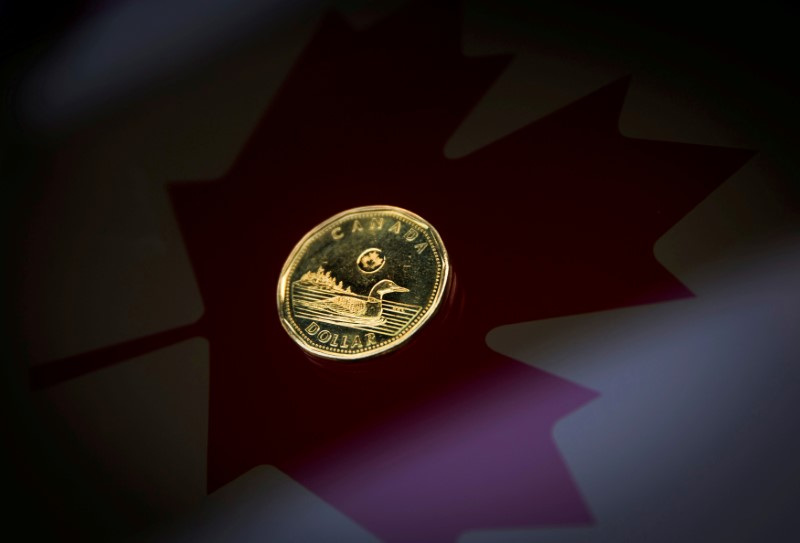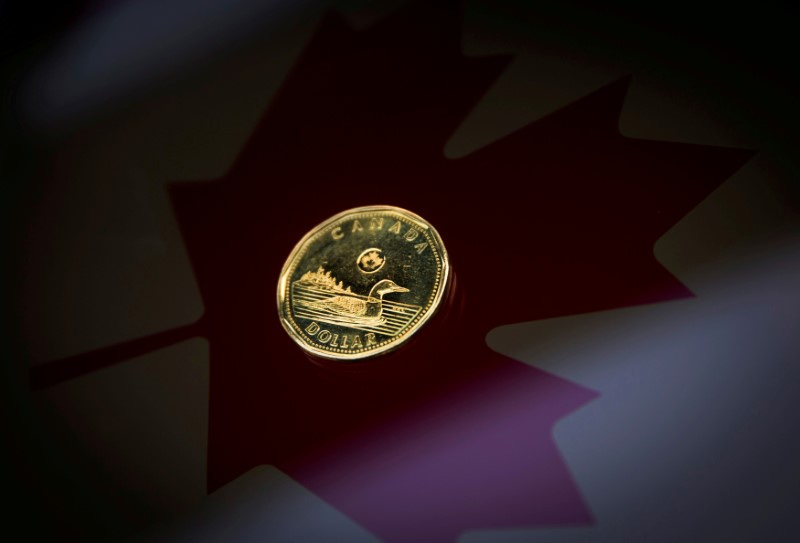Forex
Canadian dollar forecasts turn less bullish as BoC rate cuts eyed: Reuters poll


© Reuters. FILE PHOTO: A Canadian dollar coin, commonly known as the “Loonie”, is pictured in this illustration picture taken in Toronto January 23, 2015. REUTERS/Mark Blinch/File Photo
By Fergal Smith
TORONTO (Reuters) – Analysts see less upside for the Canadian dollar than previously thought over the coming year as recent data showing a slowdown in the domestic economy brings forward the expected start of Bank of Canada interest rate cuts, a Reuters poll found.
The median forecast of 35 foreign exchange analysts surveyed in the Dec. 1-5 poll was for the Canadian dollar to strengthen 0.4% to 1.3533 per U.S. dollar, or 73.89 U.S. cents, in three months, compared with 1.3450 in a November poll.
It was then expected to advance to 1.3130 in a year, versus 1.3000 in last month’s forecast.
“Our view is the Canadian dollar is going to face a difficult next three months as the data starts to look like the Canadian economy is teetering on the edge of recession if not in a mild recession,” said Simon Harvey, head of FX analysis for Monex Europe and Monex Canada.
The Canadian economy unexpectedly contracted at an annualized rate of 1.1% in the third quarter, avoiding a recession after an upward revision to the previous quarter but showing growth stumbling.
Soft domestic data “should bring forward expectations of BoC easing, especially relative to the Federal Reserve,” Harvey said. “Earlier Bank of Canada easing is going to widen rate differentials in favor of USD-CAD.”
Money markets expect the Canadian central bank to leave its benchmark interest rate on hold at a 22-year high of 5% at a policy announcement on Wednesday and then begin easing policy as soon as March. As recently as October, there were no rate cuts priced in for 2024.
A separate Reuters poll, from last week, showed economists expect the BoC to start cutting rates in the second quarter of next year and borrowing costs will drop by at least one percentage point by the end of next year.
The Canadian 2-year yield has fallen further below its U.S. equivalent in recent weeks to a gap of 54 basis points, which is the widest since March.
A lower yield tends to make a currency less attractive to investors.
(For other stories from the December Reuters foreign exchange poll:)

 Forex3 years ago
Forex3 years agoForex Today: the dollar is gaining strength amid gloomy sentiment at the start of the Fed’s week

 Forex3 years ago
Forex3 years agoUnbiased review of Pocket Option broker

 Forex3 years ago
Forex3 years agoDollar to pound sterling exchange rate today: Pound plummeted to its lowest since 1985

 Forex3 years ago
Forex3 years agoHow is the Australian dollar doing today?

 Cryptocurrency3 years ago
Cryptocurrency3 years agoWhat happened in the crypto market – current events today

 World3 years ago
World3 years agoWhy are modern video games an art form?

 Commodities3 years ago
Commodities3 years agoCopper continues to fall in price on expectations of lower demand in China

 Economy3 years ago
Economy3 years agoCrude oil tankers double in price due to EU anti-Russian sanctions





















